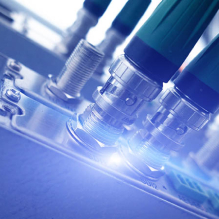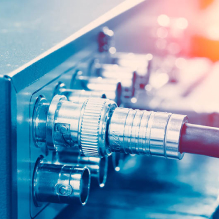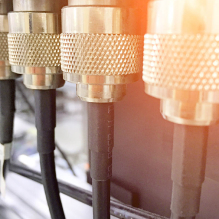Ampacity Chart for Conductors
Contact Us TodayAmpacity
The ampacity of a conductor represents its current carrying capacity. Generally, as the conductor size increases its resistance decreases resulting in a greater ability to handle current. A by-product of increasing current is increasing heat. Unless the heat is dissipated, enough current can be applied to a conductor to actually melt the metallic conductive material carrying the current. Most certainly, however, the plastic insulating material will decompose at a much lower temperature. To that end current carrying capacity limits have been established by regulatory agencies such as UL and NEC.
A variety of factors were examined in determining the current carrying capacity of an electrical conductor. Among them are conductor size; DC resistance; dielectric softening point; ambient temperature; number of conductors bundled; etc. There are a number of uncontrolled factors that were not examined but must be consid-ered in various application installations, such as air flow; voltage drop; human contact; etc. Probably the most overlooked factor in many applications is the temperature rating of adjacent materials within the installation. For example, some electrical wires will carry a temperature rating of 250°C (482°F). Many electrical connectors and plastic housings are only rated for 60°C (140°F). Consequently, given even a moderate current load the wire will remain intact but surrounding components will melt.
For just this reason the following table is strictly intended to be used as a general guide. Individual applications, whether they be communications, control, power, etc. need to be examined and all appropriate safety factors considered. This table approximates the current carrying capacity of a single 19-strand copper conductor in free air at 30°C (86°F) ambient temperature. Additionally, derating factors for cabled conductors must also be taken into account.
Insulated Wire Temperature Rating
| AWG | Diameter | 60°C | 80°C | 90°C | 105°C | 125°C | 150°C | 200°C | 250°C |
| 30 | .0124" | 1.3 | 2.0 | 2.5 | 3.0 | 3.5 | 4.3 | 4.8 | 5.9 |
| 28 | .0146" | 2.0 | 3.0 | 3.5 | 4.0 | 4.5 | 5.5 | 6.3 | 8.0 |
| 26 | .0188" | 3.0 | 4.0 | 4.5 | 5.0 | 6.0 | 7.0 | 9.0 | 11 |
| 24 | .0235" | 4.5 | 5.5 | 6.5 | 7.0 | 8.5 | 10 | 12 | 14 |
| 22 | .0296" | 6.0 | 7.5 | 9 | 10 | 11 | 13 | 16 | 20 |
| 20 | .0376" | 8.0 | 10 | 12 | 13 | 14 | 18 | 22 | 27 |
| 18 | .0403" | 11 | 14 | 16 | 18 | 19 | 25 | 30 | 36 |
| 16 | .0531" | 16 | 19 | 22 | 24 | 26 | 34 | 38 | 45 |
| 14 | .0667" | 22 | 27 | 30 | 33 | 37 | 45 | 50 | 57 |
| 12 | .0856" | 30 | 36 | 40 | 45 | 50 | 60 | 65 | 75 |
| 10 | .1080" | 40 | 47 | 55 | 58 | 65 | 80 | 90 | 100 |
| 8 | .1610" | 60 | 65 | 75 | 80 | 90 | 105 | 125 | 145 |
| 6 | .2020" | 80 | 95 | 105 | 110 | 125 | 145 | 165 | 205 |
| 4 | .2550" | 105 | 125 | 140 | 155 | 170 | 190 | 220 | 270 |
| 2 | .3310" | 135 | 160 | 180 | 200 | 220 | 240 | 280 | 350 |
| 1 | .3670" | 165 | 195 | 220 | 245 | 270 | 290 | 340 | 430 |
| 1/0 | .4160" | 195 | 230 | 260 | 290 | 320 | 340 | 400 | 510 |
| 2/0 | .4690" | 225 | 260 | 300 | 330 | 370 | 390 | 465 | 590 |
| Derating Factors for Cabled Conductors | |
| # Cond. | Derate @ |
| 2-5 | 80% |
| 6-15 | 70% |
| 16-30 | 50% |
Interested in Learning More About Us?
Harbour Industries is the global leader in product engineering and manufacturing of high temperature and high-performance cable. Our product and process engineering expertise ensures the highest quality products manufactured to precise customer specifications.
More Offerings

Harbour Industries is the global leader in the product engineering and manufacturing…
Learn More
As a premier manufacturer of High-Performance Wire & Cable, Harbour has developed…
Learn More
Since 1965, Harbour has manufactured Mil-Spec and Aerospace cables demands perfection.…
Learn More
Since 1965, Harbour Industries has manufactured Mil-Spec Commercial & UL/CSA cables…
Learn MoreCertifications
Certifications and Compliance
- AS9100D
- REACH
- Proposition 65 - California
- RoHS


